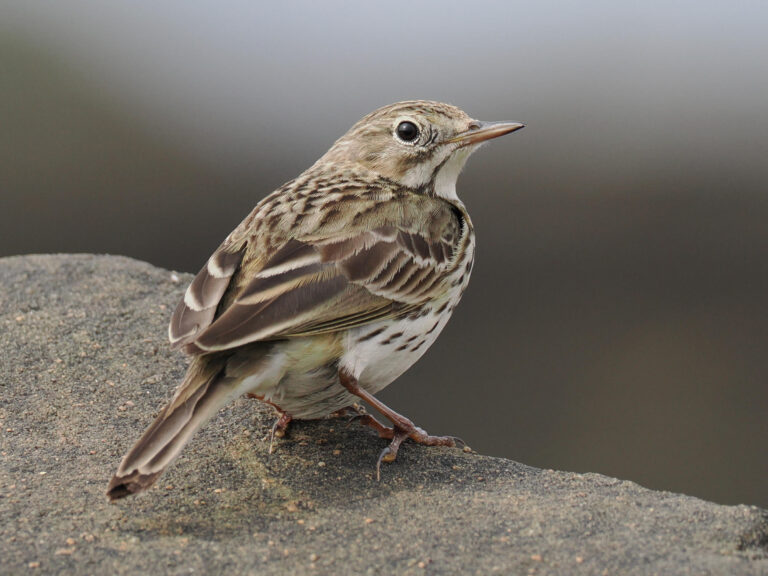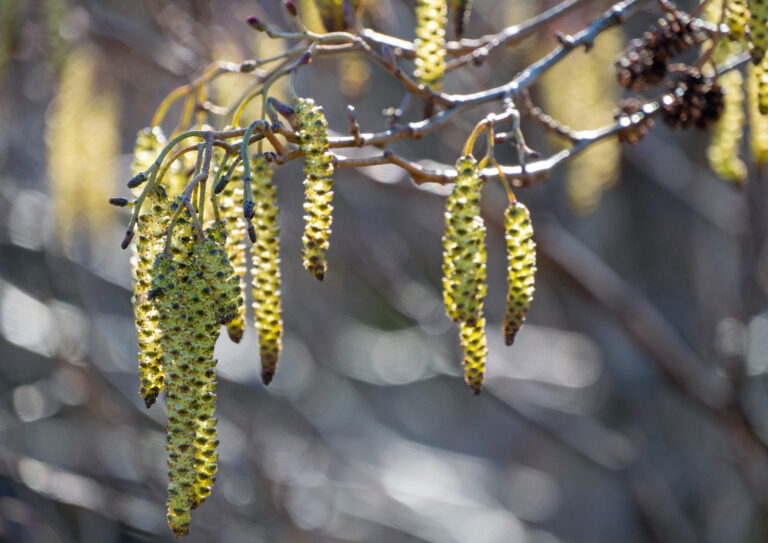By Daniel Parlour, Scottish Countryside Junior Ranger
The summer is almost done now in Caithness. The wildlife, plants and landscape around us have bloomed, flown and grown. So, I’d like to rewind back several months to talk about an exciting new path experiment happening in Dunnet Community Forest (DCF).
When you think of the forest and its paths, sheep’s wool isn’t the first thing that comes to mind. However, wool is is a multi-purpose natural product, and can be used in many ways. Despite this, it costs some farmers more to shear their sheep than what they receive from selling the wool. But, in the forest we’re making use of this unwanted wool, which was kindly donated to us by farmers. The wool will be used for many jobs, such as for mulch (it stops weeds and also the smell of it will deter deer from damaging saplings); but the main new use is for path maintenance.
At Dunnet Forest, it is a continuous battle to keep the paths walkable, especially in such a wet place. Paths get very muddy and we can’t just put gravel down on everywhere due to the quantity needed and the costs – so we use our own woodchip as we have a constant supply of it at the forest. However, this does have a knock on effect – the woodchip rots down into the mud and produces more mud for us to cover, it just never ends!
The wool path idea
This is where our new project and the sheep wool comes in. The project was the wooly wonderful idea of Oksana Latsiuta, a Climate Development Officer from the Highland Community Waste Partnership. Dunnet Community Forest, along with Mey Castle and the Thurso Socially Growing Community Garden have provided testing grounds for the project . Here’s what we did:
- First we dug out a rectangular section of a muddy path.
- Then we put wooden slats along the inside edge of the path, to support the walls of the soil and to contain the wool.
- Next we filled the hole with wool.
- Finally we covered it over with woodchip.
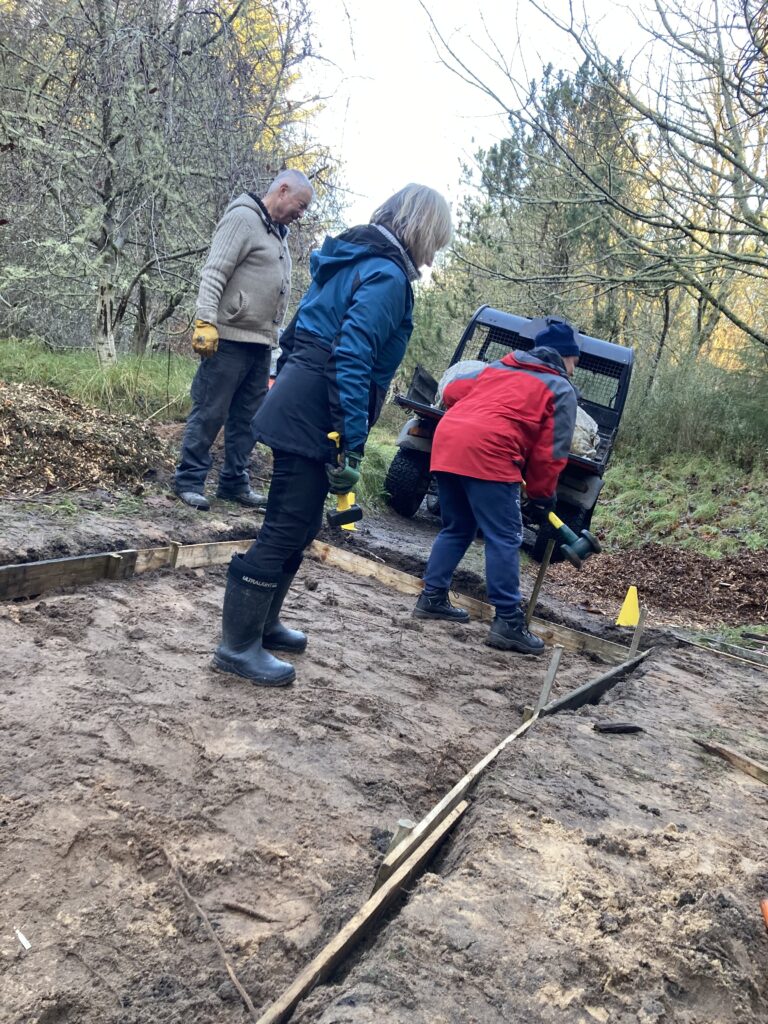
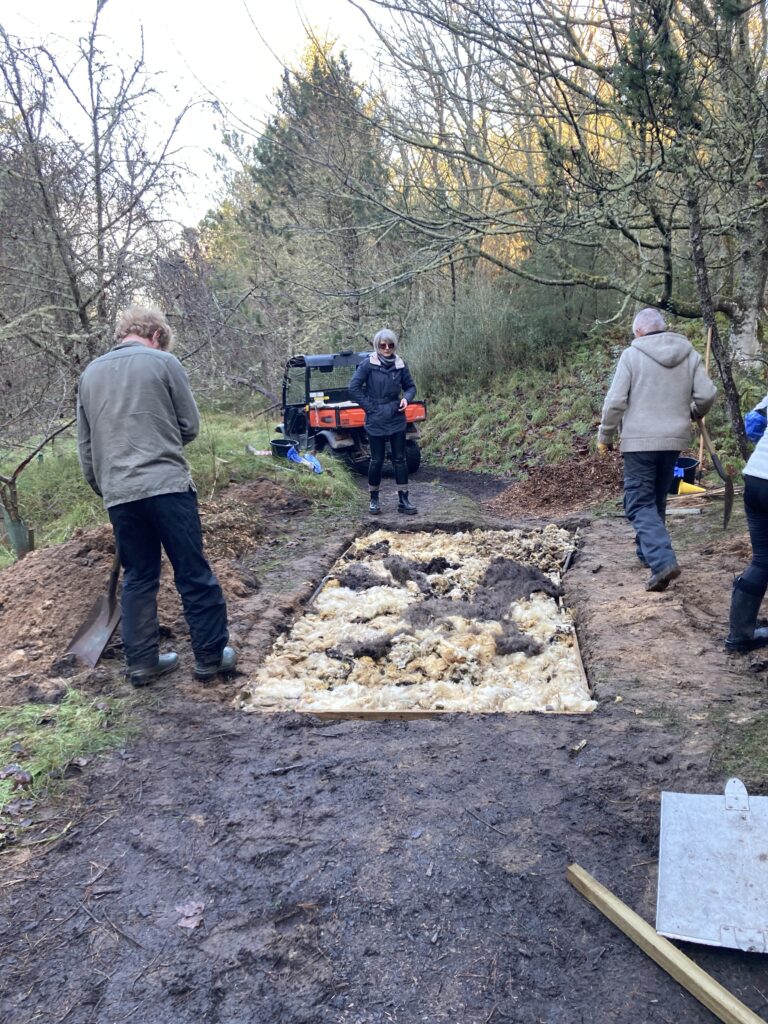
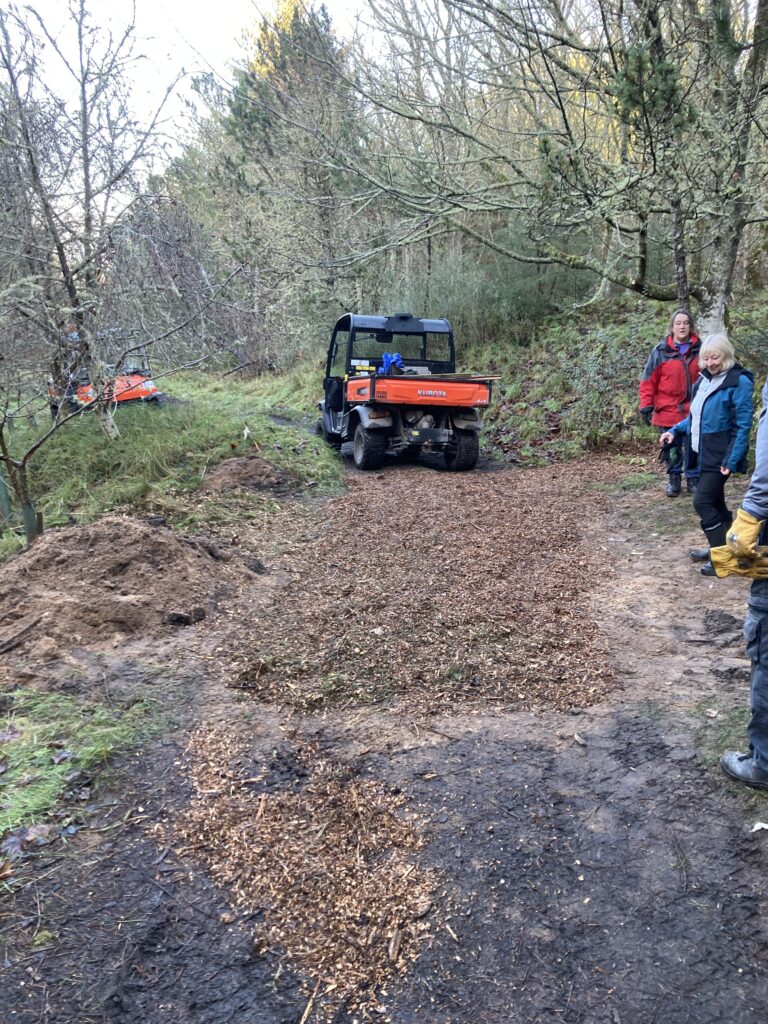
The logic behind all of this is to remove the build-up of mud. The wool fills in the area and then the woodchip is placed on top to stop the wool from blowing away, and create a nice even path. The wool shouldn’t rot as quickly as the woodchip, and it creates a soft terrain underfoot / tyre. The woodchip is now no longer in contact with the soil so it shouldn’t rot either.
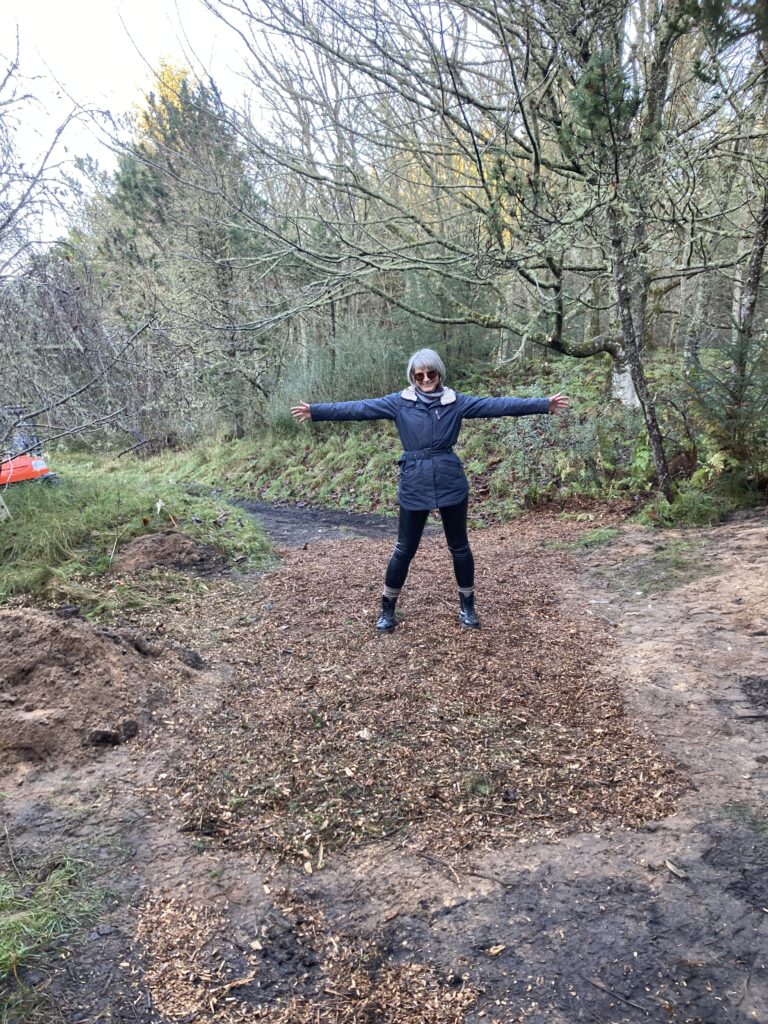
A few months later..
A few months have passed now and the path is doing well. It has compacted and is mostly dry, and is much better than the other woodchip paths nearby. If the wooly approach continues to be a success, we could apply it to all of our muddy paths. It is going to be a very time consuming job, but is a great way of recycling and is an eco friendly way of keeping the paths well maintained, without harming nature.





